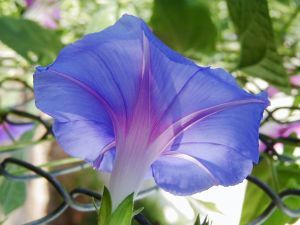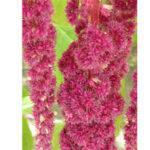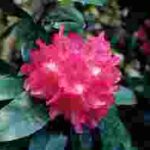Some times it is hard to determine what plants are toxic what plants are not. This information can be quite valuable when it comes to planting a garden in your yard or business especially if you have (or expect to have) children around. Making your home a safe and healthy place that is free of poisonous plants is the first step toward peace of mind when it comes to children in your care.
Non-Poisonous Plants
• Amaranth- Other names include: Pigweed and Redroot. Something that makes this weed unique is that it has alternating leaves and is quite stocky. Many people use the leaves for side dishes like you would spinach and Indians used to use the send in making bread. Personally, I would stick to spinach and other greens.
• Bay Leaves-By picking these leaves and letting the air dry, they can be used in soups. Stews, casseroles and more. Bay leaves are also a natural insect repellant and if woven in a wreath it can be places on your dog or cat to repel fleas and ticks.
• Bracken Fern -The Japanese call this plant wa-ra-ve. While the habitat is usually in forested or moist areas with the right care you can grow them in your yard. It has been eaten for centuries by Native Americans and is still eaten in Japan as well as various restaurants around the world.
• Cattail-All of us have seen these plants growing inn the marshy area of creeks streams and rivers…they are the plants that looks like a hot dog is on a skewer. All parts to this plant are oddly consumable. Some people have been known to use the pollen when mixed with wheat flour to make pancakes, muffins and bread. The roots underground are also used to make a certain type of flour.
• Chickweed-Another common name for this plat is Starwort. Most people use this plant for boiling and serving like spinach or collard greens or raw in salads. Chickweed is both high in vitamin C and copper.
• Elderberry-Elderyberry is commonly used in pies and jellies but to some species the leaves , bark, and buds have been known to be toxic. So, you should check the species of the plant before you buy it
• Gooseberry-Out of the many different species of gooseberries there are non known to be poisonous. Common uses can be jelly, jams, pies, fruit snacks and some may even be eaten raw.
• Goosefoot- The use for this is usually confines to teas.
• Horehound-Although this weed is particularly bitter it has wonderful medicinal properties. For more on this see the AC article. (please see in depth article -AC- on this plant)
• Huckleberry-This plat can be grown with limited care and water. The berries are often used in muffins, pancakes, cobblers and can be eaten raw.
• Madrone- The bright red berries are the edible area of this plant. They can be used in almost any recipe.
• Manzanita- The berries taste like miniature apples and are wonderful to eat when your out on a nature hike, but don’t eat too many as they may have a laxative effect.
• Mountain Grape- Another common name for this plant is barberry. Jelly is the primary use for this plant.
• Plantain-The leaves of this plant have often been used as a vegetable. Of course you would have to steam them for at least 15 minutes.
• Pyracantha-another name for this plant is Firethorn. The cooked berries of this plant are pleasing to the taste and are usually used in jellies.
• Wild Rose-The rose hips are usually a bright color and may be eaten raw. Rose hip tea is quite popular and so is uncooked rose petal jam.
• Sheppard’s Purse-Other names include lady’s slipper and lady’s purse. Parts of this plant can be used as steamed greens and substitutes for both pepper and ginger.
• Spearmint-This is a pleasant plant to have on your property or any garden. It also has a tendency to repel ants form invading your home.
• Storksbill-Another common name is filaree and is used in cooking. Many people confuse this plant with poison hemlock which is a hairless plant so it is important to know your plants and all the distinct features before using them in your cooking. The stems and leaves form the Storksbill are used in soups and served like spinach.
• Oxalis-another common name is Shamrock and Sour grass. These have been used in salads and as a raw snack.
• Eucalyptus-This tree can be grown anywhere with the right care. The best use for this plant is tea. It can be brewed by using the leaves and can help your symptoms if you have cold, flu or intense allergies.
Poisonous Plants
• Buckeye-A toxic principle contained in this plant is aesculin. Many children have died from consuming this poisonous plant.
• Buttercup-Juices from this poisonous plant have caused ulcers in the skin and intestinal problems.
• Oleander-They can life in pretty much any condition. The milk leaves, stalks, etc are highly poisonous and have killed countless animals, children and adults. Small amounts, such as a single drop of the milk can kill a baby/small child.
• Morning Glory-They have a LSD like compound. A poisoned person will experience hallucinations, nausea convulsions and ultimately death.
• IVY-The foliage of this plant is the most potent poison but the berries are also toxic.
• Lupine-Another common name is wolf pea. This plant contains alkaloid poisons. Because this is a hard plant to distinguish from other non poisonous lupines. They should all be avoided unless you are able to properly identify them.
• Climbing Nightshade-The red berries on this plant have mistakenly eaten by children and have devastatingly effects.
• Wild Cucumber-There is too many questions regarding this plant to as what part of it is toxic. So far the issue of toxicity is in how much of this plant is consumed.
• Jimsonweed-Commonly referred to as stinkweed. All parts are known to be poisonous. It contains hallucinogens and many people have died form drinking teas brewed of this plant.
• Scouring Rush-The other common name for this plant is horsetail usually this plant usually grows around springs, creeks, rivers, etc. This plant contains never poison and has been implicated in livestock deaths.





